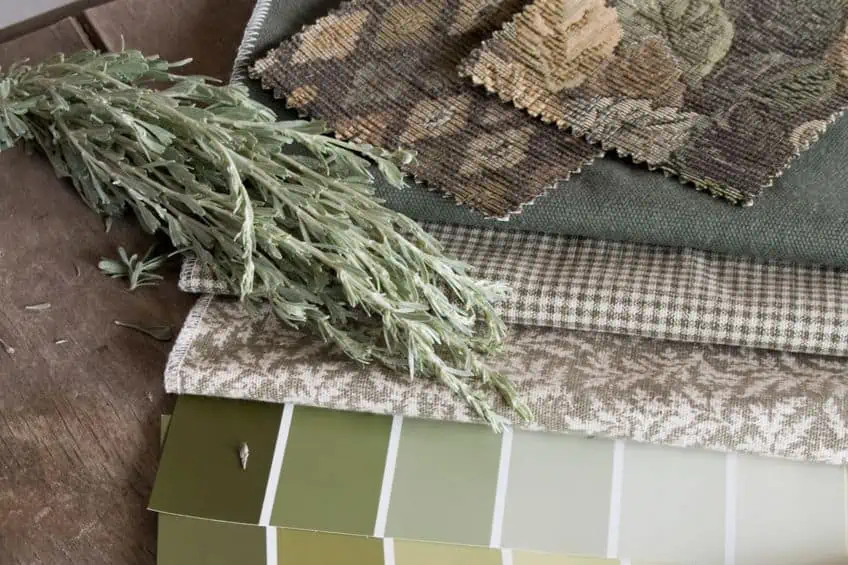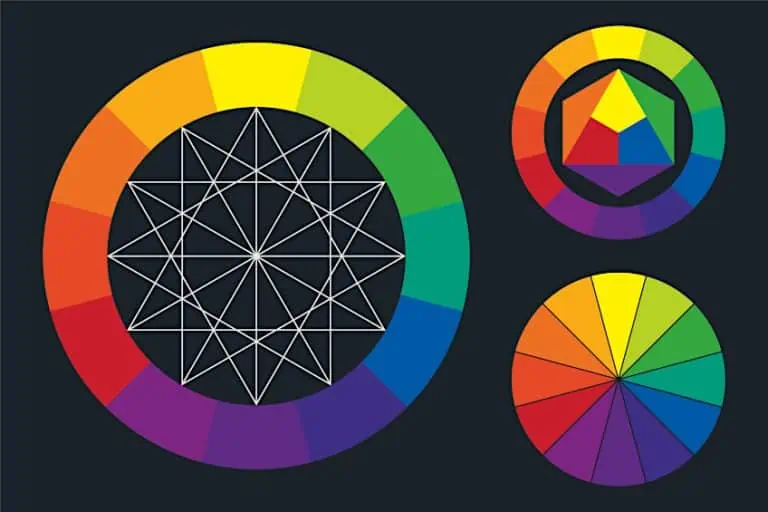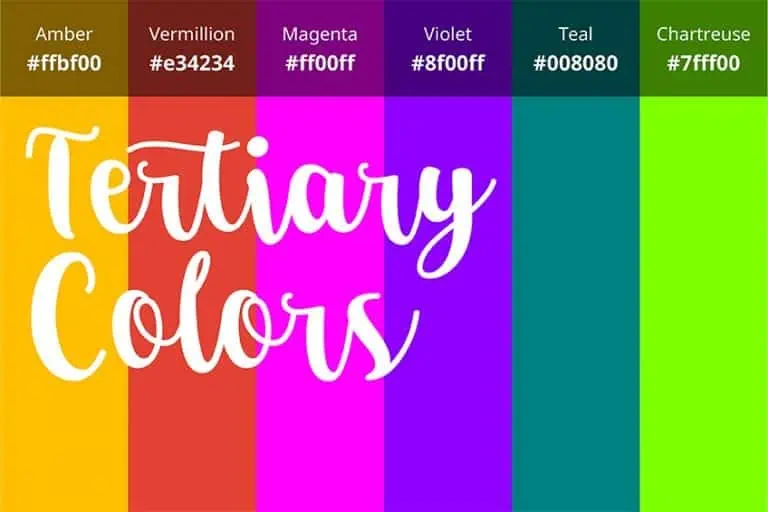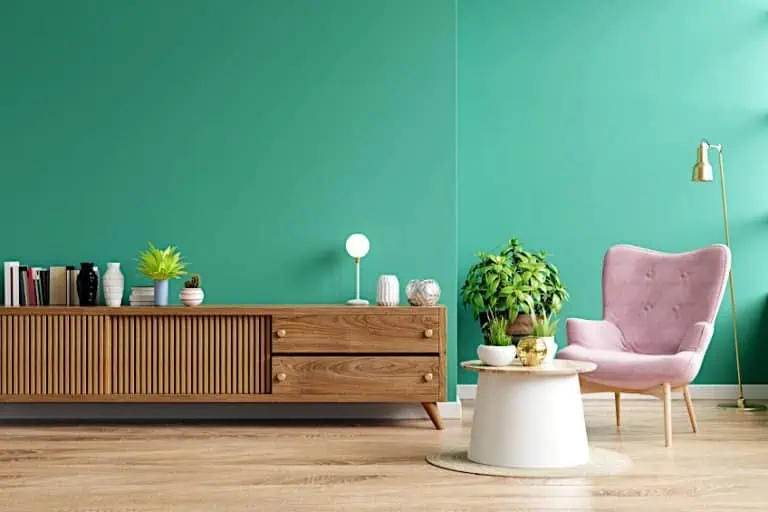Sage Green Color – How to Create and Use a Sage Color Palette
This post may contain affiliate links. We may earn a small commission from purchases made through them, at no additional cost to you.
Reminiscent of a stroll through a lush forest, or a moment of quiet contemplation in nature, sage green is a hue that evokes a sense of tranquility and serenity within its observers. With its soft and muted quality, the sage green color invites us to slow down and savor the simple pleasures that fill our lives. As a versatile color that pairs well with a surprisingly wide range of other shades, sage green remains a timeless choice for home decor and fashion alike. If you are at all interested in finding out more about the sage green color palette, the sage color meaning, and its rich history, as well as what colors make sage green, then join us as we delve deeper into this serene hue.
Table of Contents
What Is Sage Green?
As a delicate blend of earthy hues, sage green is able to capture the essence of nature’s beauty in a single shade. This is an understated shade of green that encourages us to take a pause in our busy days to appreciate the subtlety and grace of our natural world. With its muted elegance, sage green creates a sense of calm and tranquility, reminding us of the peacefulness of a verdant forest, or a serene meadow. There are many different facets of sage green, making it fairly difficult to truly describe in just a few sentences. To help you come to terms with this earthy hue to build upon your own artistic journey, we will be covering these various facets of sage green below!

Shades of Sage Green
The many different shades of sage green can be seen as an orchestra, with each shade providing its own unique style and flair in unison with one another to create a greater symphony that can then be appreciated on a larger scale. From the crisp, fresh hues of early spring to the warm, earthier tones of autumn, sage green is able to offer a wealth of options for those seeking to add a touch of nature’s beauty to their surroundings.
Below, you will find the many shades that make up the sage green color palette, along with their respective sage green hex code for all our digital artists at home!
| Sage Green Color | Sage Green Hex Code | RGB | CMYK Color Code (%) | Shades of Sage Green |
| Sage Green | #b2ac88 | 178, 172, 136 | 0, 30, 24, 30 | |
| Desert Sage | #aaae9f | 170, 174, 159 | 2, 0 9, 32 | |
| Surf Spray | #aabfb8 | 170, 191, 184 | 11, 0, 4, 25 | |
| Laurel Green | #acbaa1 | 172, 186, 161 | 8, 0, 13, 27 | |
| Green Lily | #b5c6b4 | 181, 198, 180 | 9, 0, 9, 22 | |
| Sagebrush | #517470 | 81, 116, 112 | 30, 0, 3, 55 | |
| Silt Green | #adc3b7 | 173, 195, 183 | 11, 0, 6, 24 | |
| Celadon Green | #b2c1a2 | 178, 193, 162 | 8, 0, 16, 24 | |
| Eucalyptus | #9cab9e | 156, 171, 158 | 9, 0, 8, 33 |
Whether you merely prefer the bright, invigorating energy of light sage, or the richness and depth of a darker, more forest-inspired shade, each variation of this versatile color is a reflection of the stunning diversity that can be found throughout our natural world. With its delicate balance of green and gray, the shades of sage green make it simpler for us to appreciate the natural divinity within our everyday lives.
Sage Color Meaning Throughout Time
To fully know and understand what sage green is in order to use it correctly within your own designs, you must first come to terms with this shade’s history. The history of sage green is woven into the very fabric of our human history, tracing its roots back to ancient cultures and civilizations. In ancient Rome, for instance, this shade was considered a symbol of wealth and prosperity, and became widely used to adorn homes and public spaces throughout the region, along with clothing too.

During the Renaissance, however, artists and designers would embrace sage green as a symbol of balance and harmony. In fact, they would incorporate this shade into their paintings, architectural designs, and sculptures specifically for the purpose of enhancing their beauty. One such painting would include none other than Michelangelo’s very own The Creation of Adam. Located on the ceiling of the Sistine Chapel, this painting stands as a testament to Michelangelo’s mastery of anatomy, movement, and emotion.
With fluid lines and a bold use of color, Michelangelo captures the moment when God breathes life into Adam, imbuing the figure with a sense of energy and vitality.
| Artist | Michelangelo |
| Date Completed | 1512 |
| Medium | Paint and plaster |
| Dimensions (m) | 2,8 x 5,7 |
| Current Location | Sistine Chapel, Vatican City |
 Creation of Adam (1511) by Michelangelo; Michelangelo (1475–1564), circa 1511, Public domain, via Wikimedia Commons
Creation of Adam (1511) by Michelangelo; Michelangelo (1475–1564), circa 1511, Public domain, via Wikimedia Commons
The use of sage green in Michelangelo’s “Creation of Adam” painting is a subtle yet powerful element that adds depth and meaning to this iconic work of art. The soft, understated green hue serves to highlight the contrast between the divine and earthly, emphasizing the separation between God and Adam. At the same time, the gentle, calming quality of sage green adds a sense of serenity to the scene, suggesting the peace and stability that come with the creation of life.
As time continued, sage green would grow to become synonymous with growth and renewal, and would reflect the changing of seasons and the continuous cycle of life. Over the many centuries since, this timeless color has been used to evoke a sense of peace, calm, and stability.
Leading into our modern day, however, sage green continues to be a popular choice for those seeking to bring a touch of nature’s serenity into their homes, fashion, or artworks. Whether used as a soothing accent color, or as a bold statement, sage green remains a timeless color, embodying the wisdom and elegance of our collective history and heritage.
How to Mix Your Own Sage Green Color
Mixing paint is like a form of alchemy, where you take simple ingredients and transform them into a work of art. When it comes to mixing your own sage green color paint, it is no different. To create this soothing and grounding hue, you will need a few essential tools and some basic knowledge of color theory. Before we get started, you will need to gather the following tools and materials:
- A palette
- A paintbrush
- Paints (red, yellow, blue, and white)
| Color Name | Hex Code | RGB | CMYK Color Code (%) | Shade of Color |
| Red | #ff0000 | 255, 0, 0 | 0, 100, 100, 0 | |
| Yellow | #ffff00 | 255, 255, 0 | 0, 0, 100, 0 | |
| Blue | #0000ff | 0, 0,255 | 100, 100, 0, 0 | |
| White | #ffffff | 255, 255, 255 | 0, 0, 0, 0 |
Now, to get started, you merely need to add a small, equal amount of both blue and yellow paint to your palette. This should immediately give you a shade of green, although too bright and vibrant. To soften this shade, add a small amount of red, which will give your green a more muted and earthy appearance. This is where you should start to experiment with the different ratios until you reach your desired shade.

Once you have landed on your preferred shade of sage green, you will then need to add a tiny amount of white paint, until you are able to reach the perfect lightness and brightness for your preference. But remember, a little bit of white can go a long way, so make sure to take your time and not overdo it! And there you have it! Your very own custom-mixed sage green paint, ready to transform a blank canvas into a masterpiece. So, go ahead and take a brush, let your creativity flow!
As you may have come to realize throughout this article, sage green is a versatile and elegant color that has the ability to evoke a sense of grounding tranquility. Its soothing and understated tone adds a touch of serenity to any space, making it the ideal choice for home decor or creative projects such as painting, sculptures, and more. Whether you choose sage green as your primary color, an accent color, or merely as a backdrop, this shade remains powerful enough to elevate any design it is part of.
Frequently Asked Questions
What Colors Make Sage Green?
Sage green paint can be created by mixing equal parts of blue and yellow paint. Following this, you will need to add a touch of red paint to establish an earthier tone, to which you can lighten to your liking using tiny amounts of white paint. Soon after, you should be able to attain your own mix of sage green paint.
What Is the Most Widely Accepted Sage Color Meaning?
The sage color meaning can be culturally and personally subjective, but has become generally associated with balance, growth, and stability. This color is often seen as a symbol of nature, as it represents growth and abundance.
What Is Sage Green?
Sage green is a hue that exudes a subtle, sophisticated charm, one that is evocative of the natural world. This stunning color is a serene and calming shade that blends the earthy essence of green with a muted gray undertone.
Duncan graduated with a diploma in Film and TV production from CityVarsity in 2018, after which he continued pursuing film while taking on a keen interest in writing along the way. Since having graduated, he began working as a freelance videographer, filming a variety of music videos, fashion and short films, adverts, weddings and more. Throughout this, he’s won a number of awards from various film festivals that are both locally and internationally recognized. However, Duncan still enjoys writing articles in between his filming ventures, appreciating the peace and clarity that comes with it.
His articles focus primarily around helping up-and-coming artists explore the basics of certain colors, how these colors can be paired with other shades, as well as what colors are created when you mix one with another. All while relating these shades to historically significant paintings that have incorporated them into their color palette. As a lover of the arts himself, he takes great interest in the Renaissance era of paintings, an era that has directly inspired many of his favorite films.
Learn more about Duncan van der Merwe and about us.







